Our largest national park is home to 25 per cent of the UK’s threatened species – but the combination of high latitude and altitude makes it a challenging place to overwinter. Indeed as winter closes in much of the wildlife that can be spotted here in summer migrates, either vacating the area completely or moving downhill. The rest must adapt to the coldest, snowiest and windiest conditions in Britain.
Birds – from tiny crested tits to ptarmigan and geese – plump up their plumage, use countercurrent circulation in their legs to prevent heat loss through the feet, and face into the wind to avoid ruffling feathers. Foxes and mountain hares, meanwhile, grow longer winter fur here than those living farther south.
When the most vicious cold strikes, all species seeks shelter – in tree holes, branch forks and boulder crevices, or burrowed into the snow. Mice and voles stay active under the snow and may huddle for warmth, as do birds such as wrens and long-tailed tits.
Spotting birds and mammals may be trickier during winter – but, like keen wildlife watchers, most will venture out on crisp, bright days.
1
(Rock) Ptarmigan, Lagopus mutus
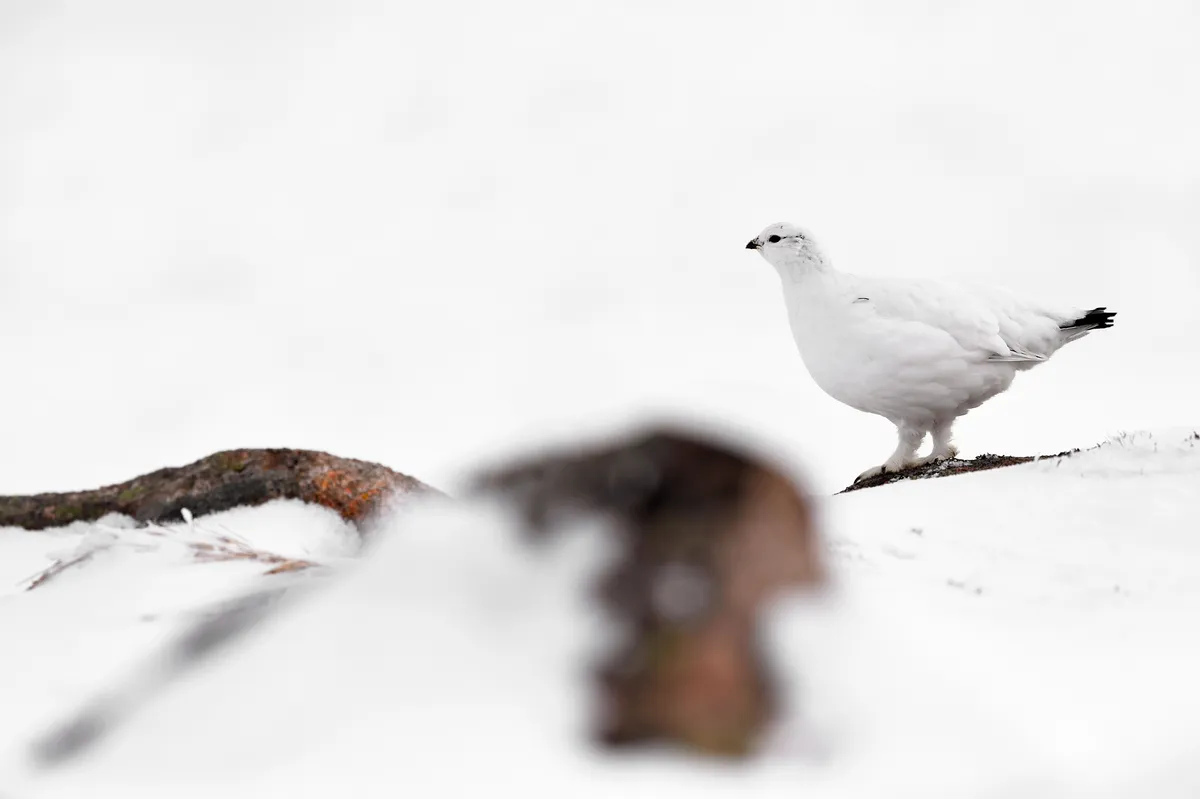
This bird is found at high altitude year-round to avoid competition with red grouse. Its feathered feet protect it from frostbite and act as snowshoes.
Ptarmigan survive by eating frozen vegetation and berries, and roost in snow holes or between boulders, all but invisible in their all-white winter plumage.
2
Snow bunting, Plectrophenax nivalis
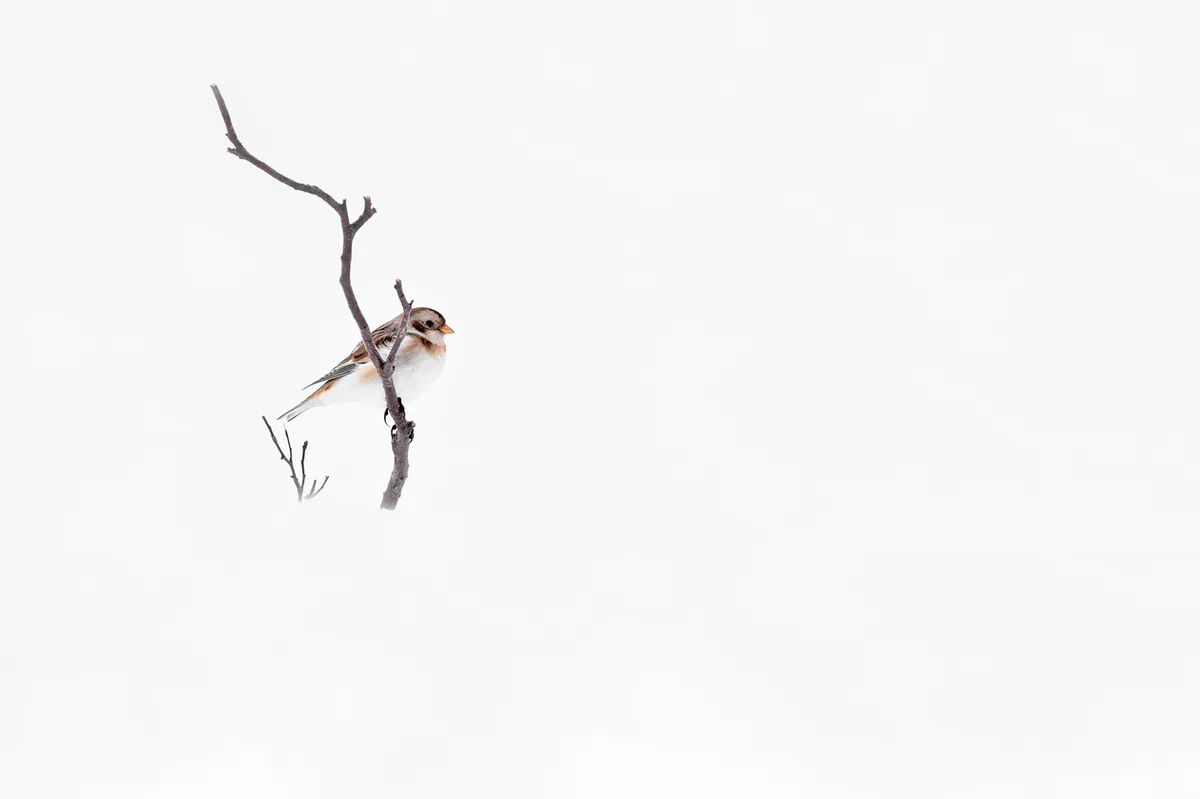
Flurries of this little ‘snowflake’ arrive on our coasts and uplands from Scandinavia each winter, but the Cairngorms population is resident year-round. Its black, white and sandy-brown winter plumage matches rocky snow slopes, where it forages for seeds and insects.
3
Crested tit, Lophophanes cristatus
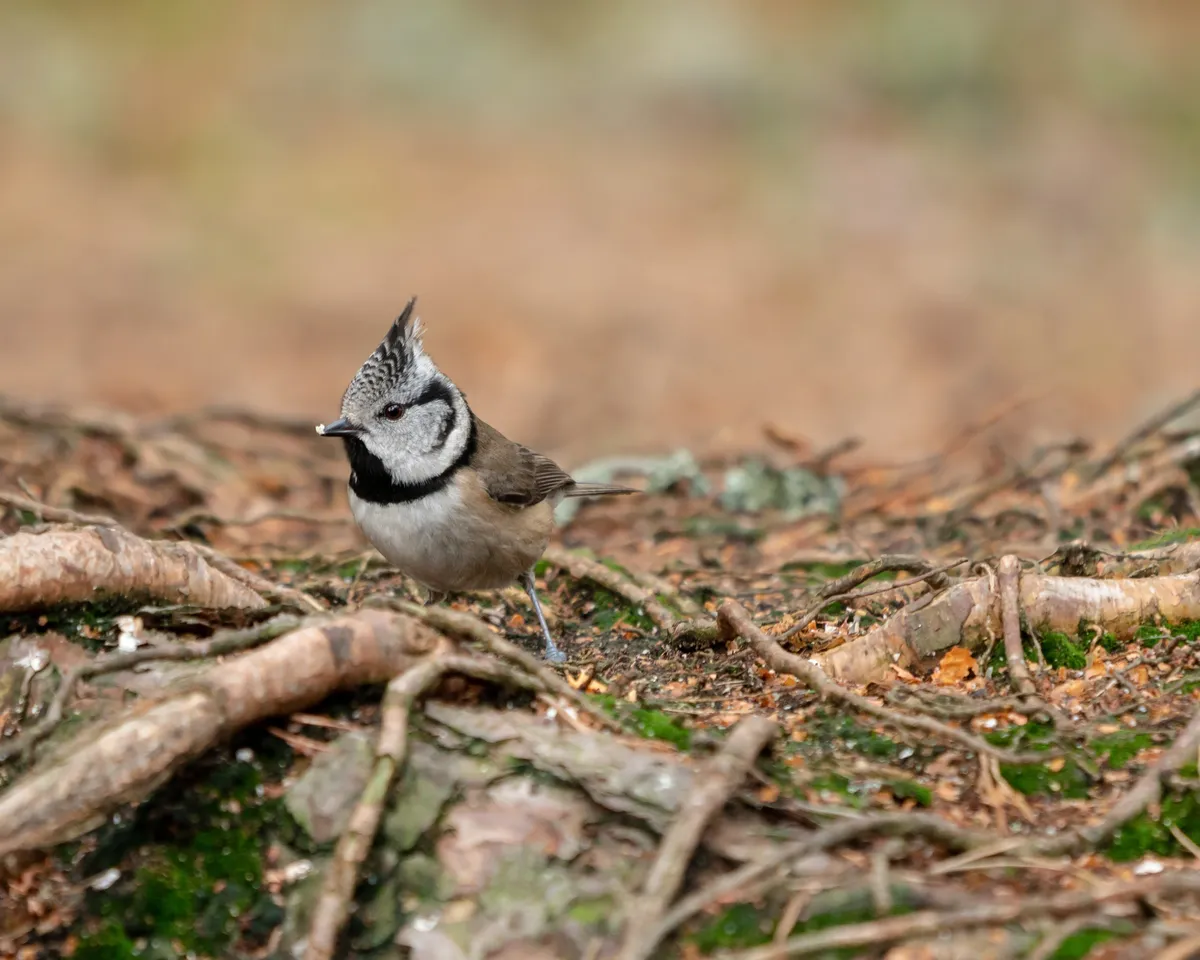
The (European) crested tit, sometimes known as a 'crestie', is widespread across Europe, but in the UK it is restricted to the ancient Caledonian pine forests and Scots pine plantations in Scotland. In winter, it will join mixed tit flocks.
4
Hooded crow, Corvus cornix
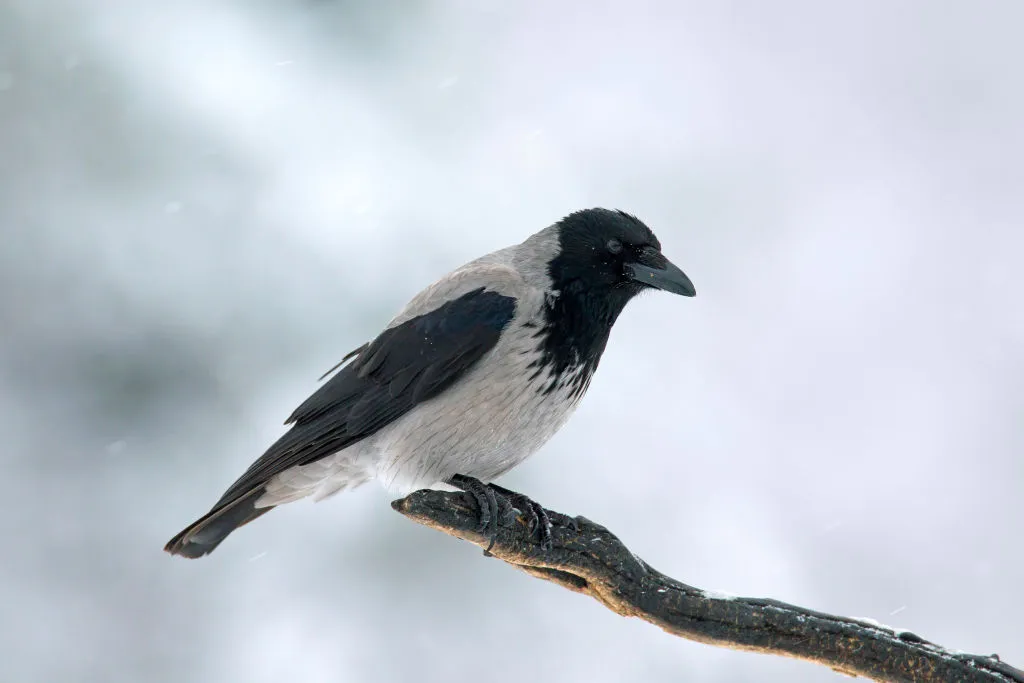
Restricted to the north and west of the British Isles, this handsome and resourceful scavenger benefits when exceptionally cold weather brings a glut of frozen carrion. Birds of intermediate appearance are often hybrids with the closely related carrion crow.
5
Golden eagle, Aquila chrysaetos

Although smaller than white-tailed eagle, the wingspan of the golden eagle can be more than 2 metres. These beautiful birds can be seen in parts of Scotland, Northern Ireland and Ireland, having disappeared from England and Wales due to persecution.
They mainly eat rabbits and mountain hares, but will occasionally catch grouse and foxes.
Golden eagle fight in the Alps
6
White-tailed eagle, Haliaeetus albicilla
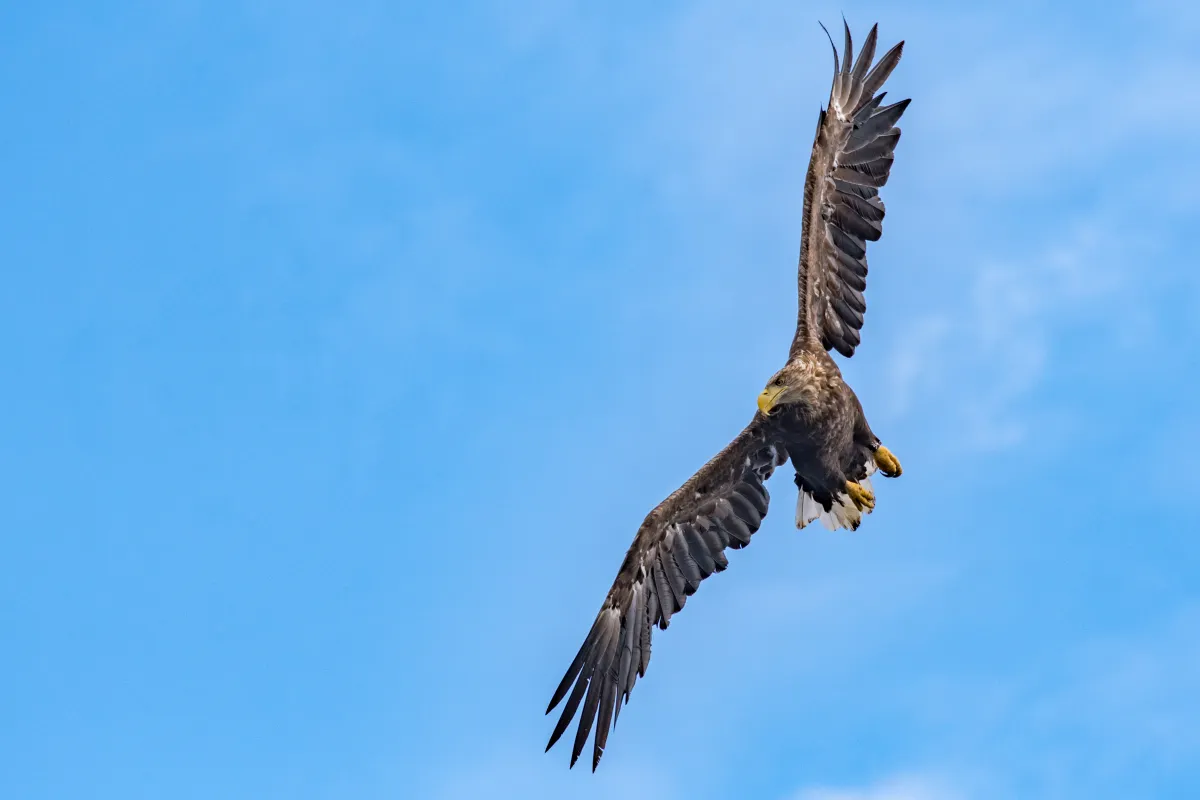
The white-tailed eagle is the UK's largest bird of prey. It went extinct in the UK during the early 20th century, and was reintroduced.
They eat a variety of prey, including large fish, birds, rabbits and hares. They will also eat carrion.
7
Red grouse, Lagopus lagopus scotica
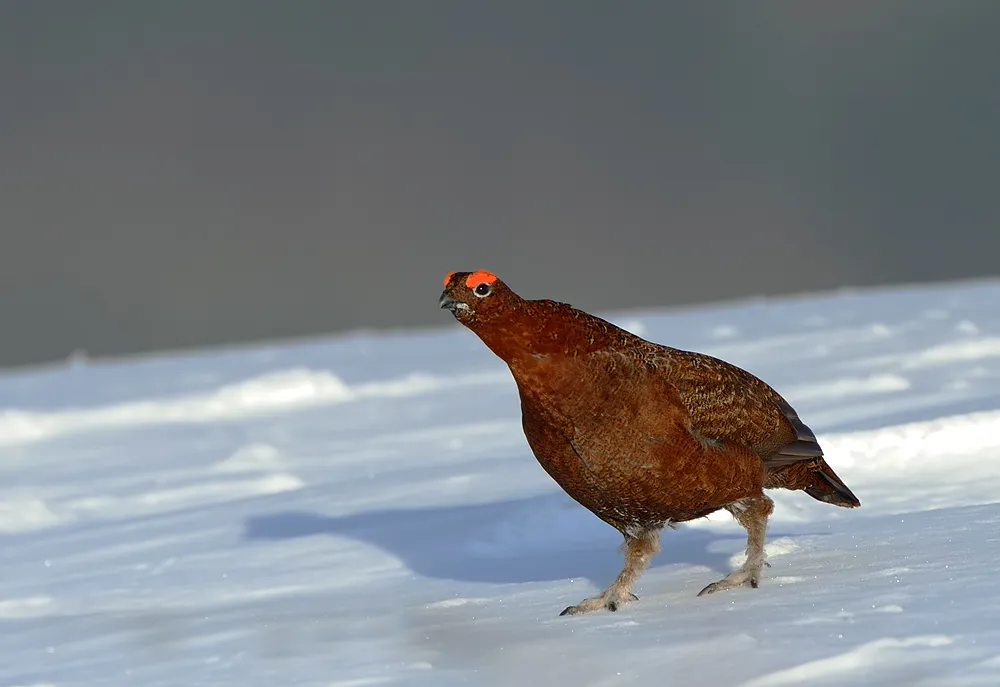
Much of the moorland in the Cairngorms National Park is managed for red grouse shooting. When disturbed, they burst out from the heather and make a 'go back' vocalisation.
8
(Bohemian) Waxwing, Bombycilla garrulus
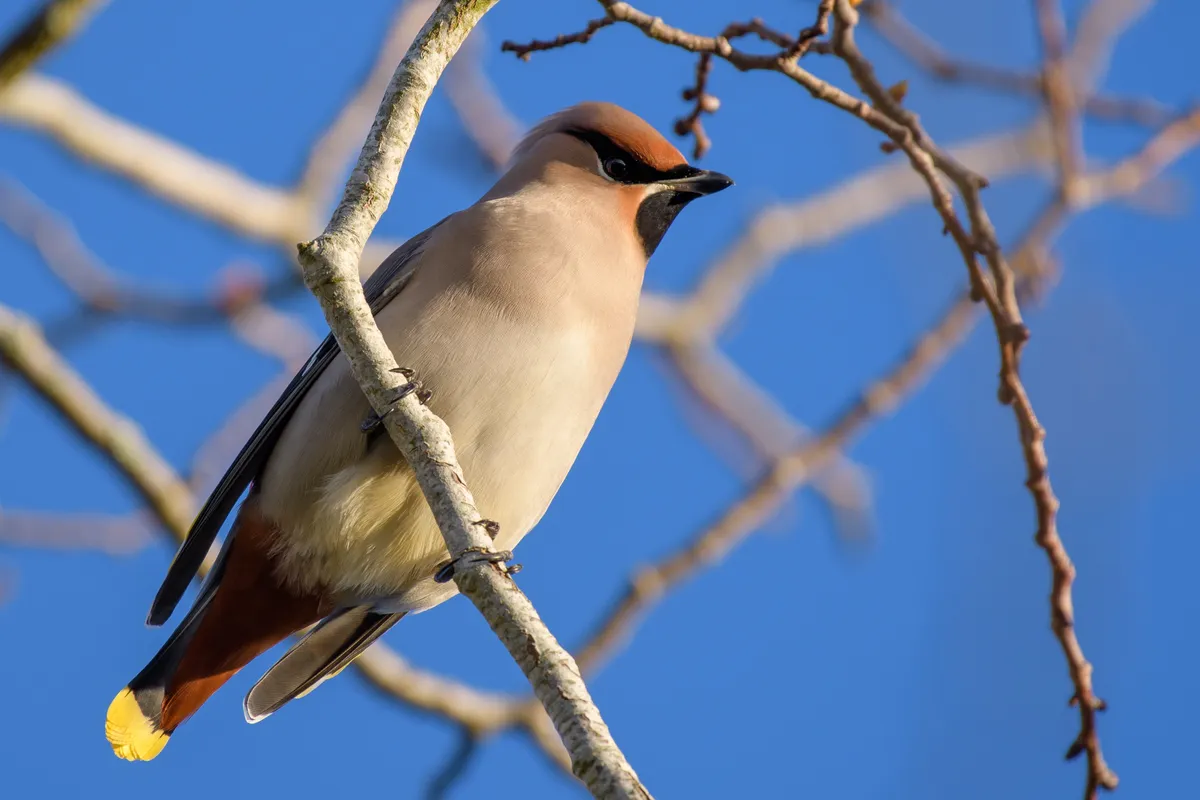
Waxwings are winter visitors to the UK, migrating here from Scandanavia when food becomes scarce there. In some harsh winters, huge numbers arrive and sweep across the UK, known as irruptions. They are berry eaters, favouring rowan and hawthorn.
9
(Eurasian) Red squirrel, Sciurus vulgaris
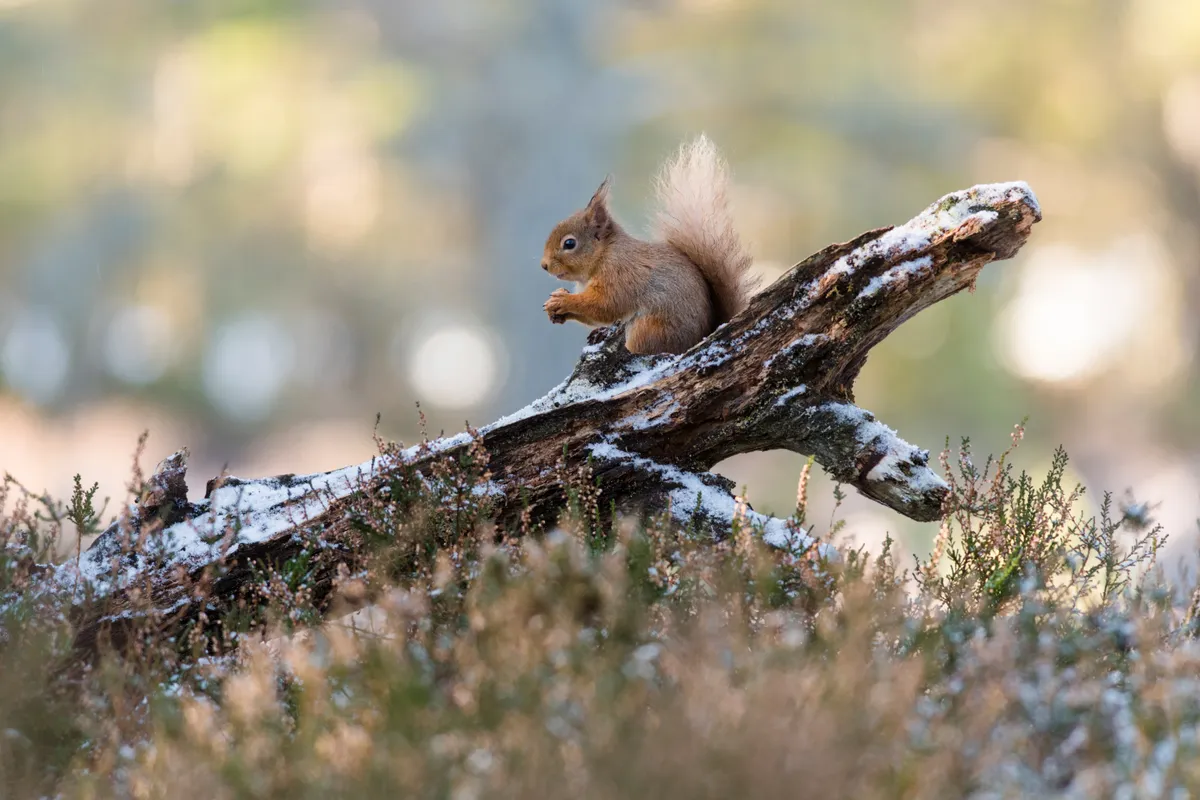
Red squirrels are the only native squirrel species in the UK, having lived here for around 10,000 years (grey squirrels were introduced in the 1800s). Scotland is one of the best places to see them.
10
Mountain hare, Lepus timidus
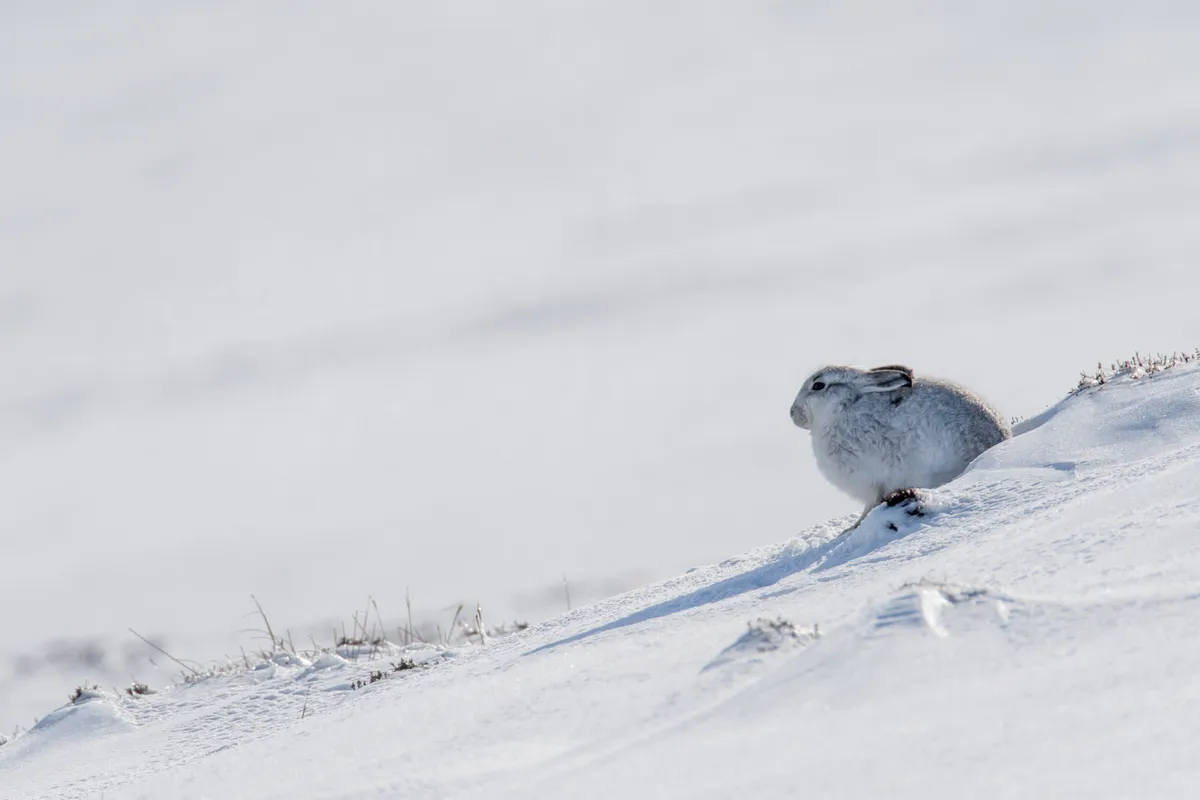
A separate species to the brown hare, mountain hares are found in the Scottish Highlands and the north of England. They graze on vegetation and bark.
In summer, they are grey-brown in colour, turning white in winter for camouflage.
11
(European) Pine marten, Martes martes
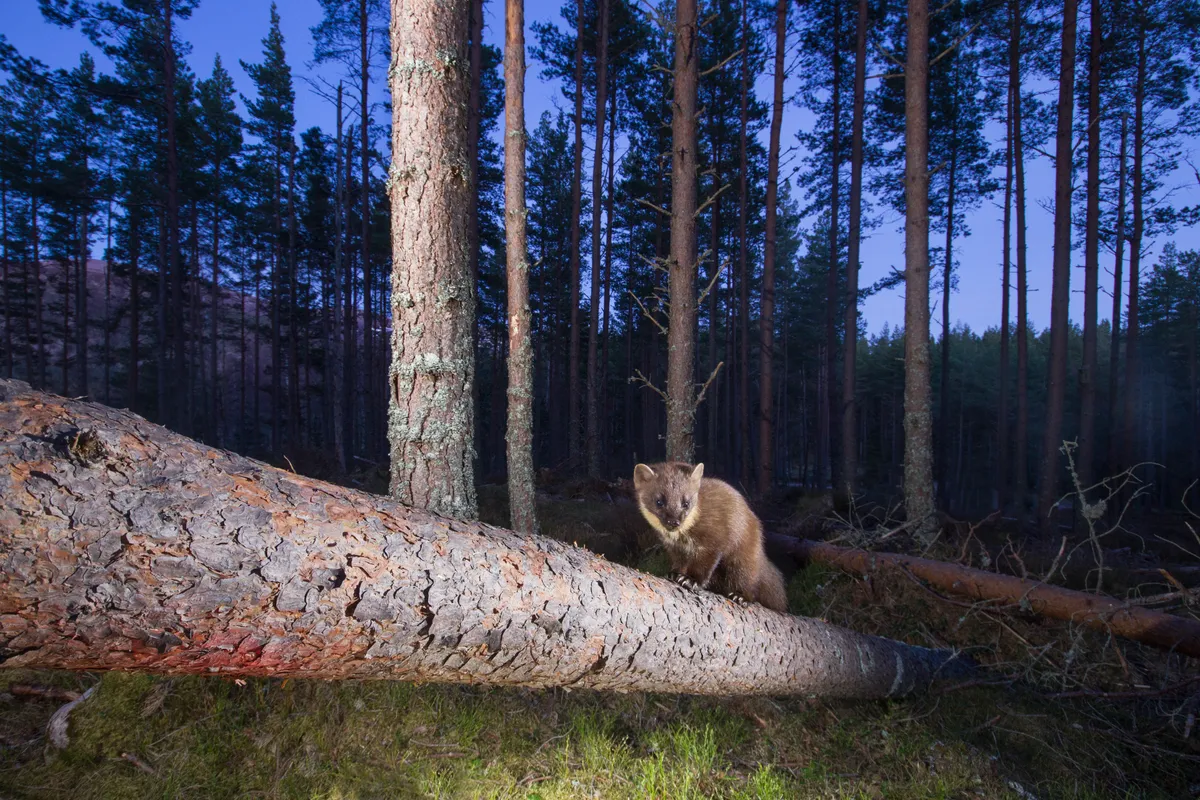
The pine marten is part of the mustelid family (which also includes stoats, weasels, otters and badgers), and are mainly found in the north of the UK. It is quite an elusive nocturnal animal, but can be tempted to feeding stations.
Pine martens are omnivorous, feeding on fruit (especially bilberries during the summer), insects, eggs, birds and small rodents.
12
Scottish wildcat, Felis silvestris silvestris
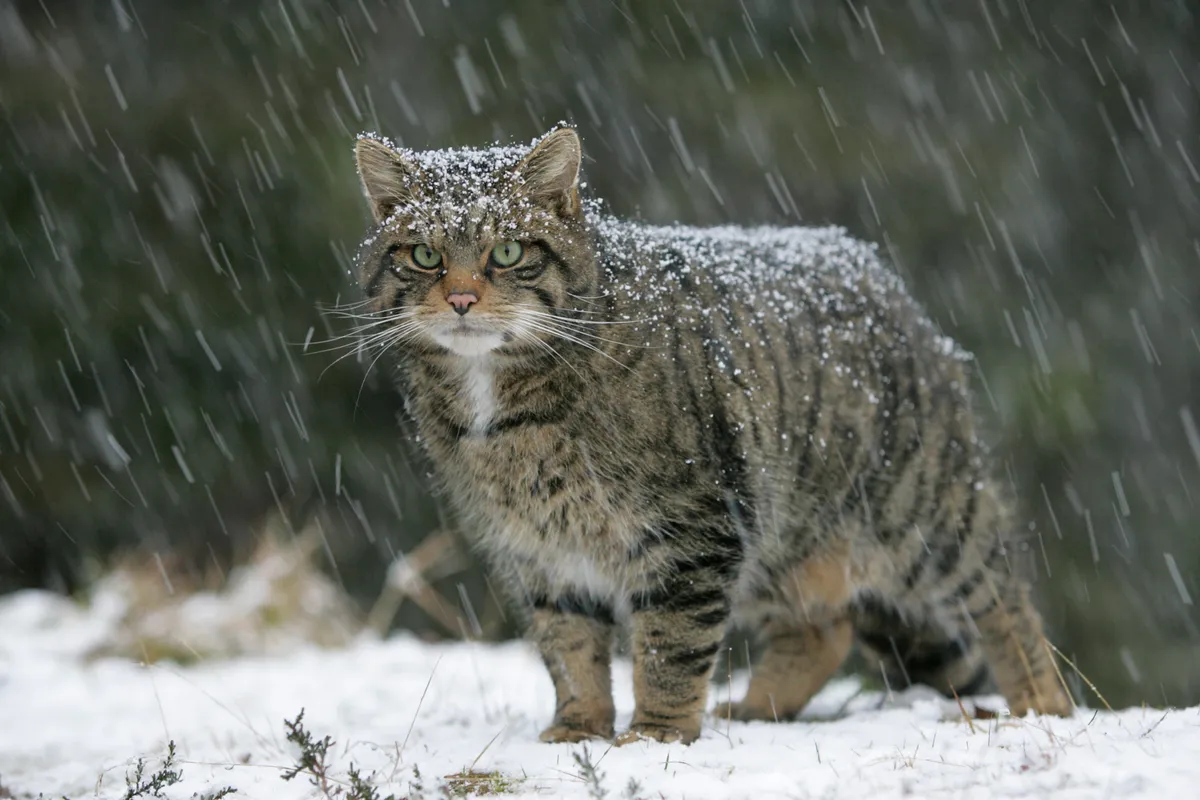
The Scottish wildcat is the only member of the cat family in the UK. It is a subspecies of the wild cat species, which is listed as Least Concern on the IUCN Red List.
In the UK, the Scottish wildcat is restricted to very small parts of the Scottish Highlands and there are fears that the subspecies is now functionally extinct, having bred with feral cats.
13
Red deer, Cervus elaphus
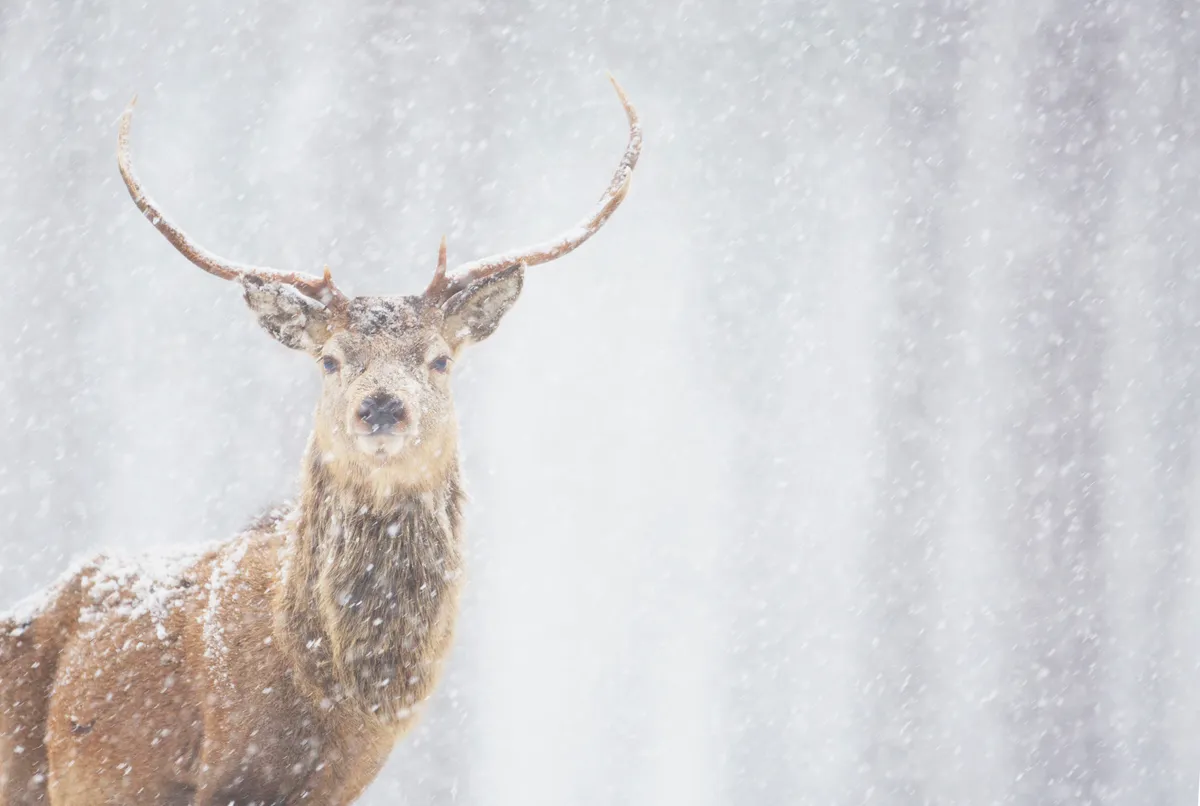
The red deer is the UK's largest land mammal, standing at up to 1.37 metres (at the shoulder) and weighing in at up to 225kg (mature males).
Most red deer are found in the Scottish Highlands and islands, but they can be found elsewhere in the UK.
Red deer are particularly impressive during the rutting season:
14
Snow flea, Boreus hyemalis
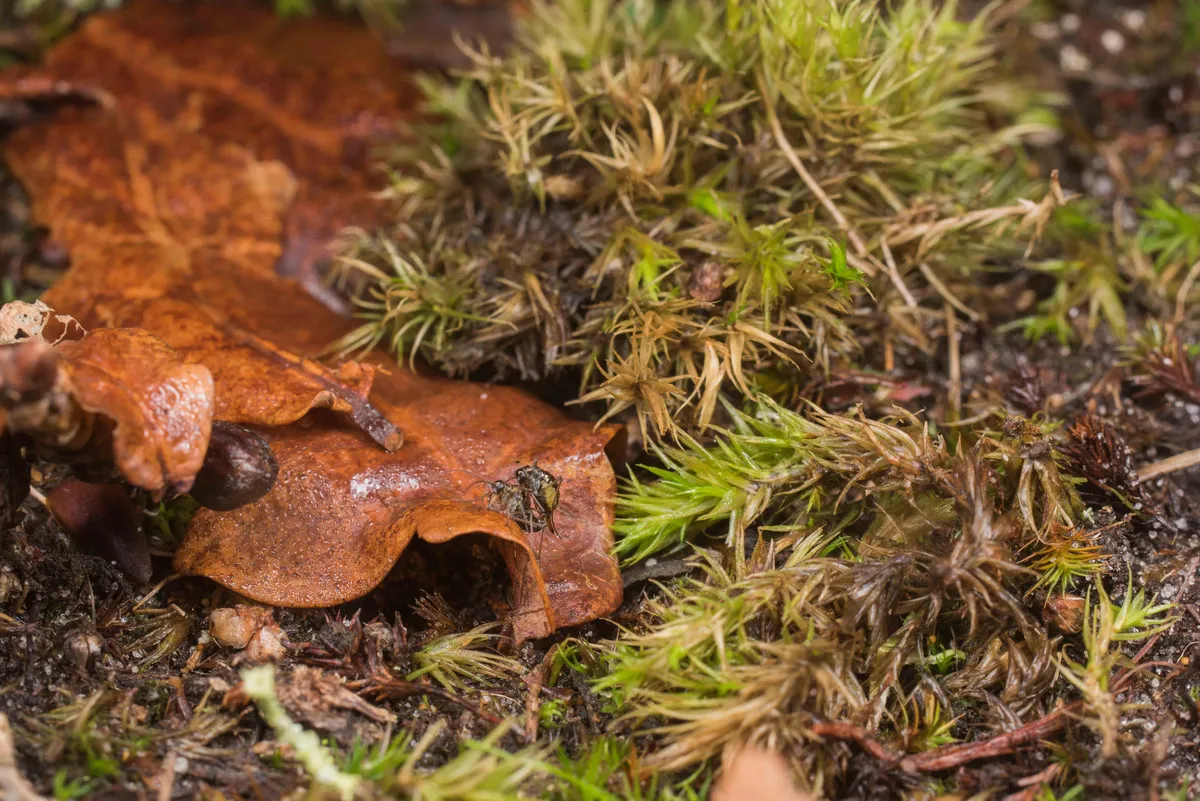
Not actually a flea, this wingless, leaping scorpionfly of mossy habitats is most easily detected in snow. Adults emerge in winter to hunt other small insects – the ‘beak’ has biting mouthparts at its tip. The appendage on the female’s rear is an ovipositor.
Where can I see in wildlife in the Cairngorms?
The national park comprises a varied range of habitats and wildlife-watching opportunities. Here are a few places to check out:
- Cairn Gorm plateau
Take the funicular railway to 1,097m where ptarmigan, snow buntings and mountain hares can be seen very close to the station. - RSPB Abernethy Forest and Loch Garten
Caledonian forest with crested tits, capercaillies, Scottish crossbills, black grouse and red squirrels. - Reindeer Centre, Glenmore
Daily tours visit the free-ranging herd on the hillside. - Insh Marshes National Nature Reserve
See flocks of whooper swans, greylag geese and other wildfowl, and watch hen harriers and red kites arrive to roost near dusk. - Rothiemurchus Estate
Home to pine martens, badgers, red squirrels, crossbills, crested tits and roe deer. Dotted with hides. - Highland Wildlife Park
The local celebrities include pine martens, red squirrels, capercaillie, beavers and wildcats in naturalistic enclosures – no fieldcraft required!
Challenging Climate
Over recent years, thaws have come earlier in the Cairngorms, creating slushy conditions and reduced snow cover.
This could cause problems for animals with white winter camouflage - ptarmigan, mountain hares and stoats - and for others, such as mice and voles, that rely on snow for insulation.
